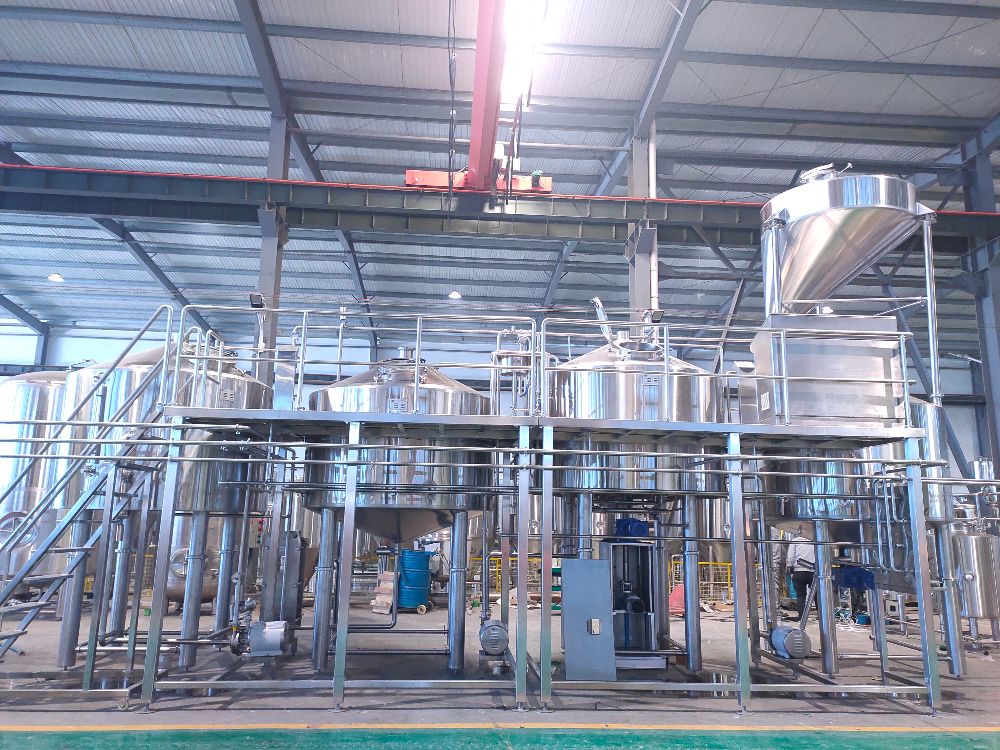Secondary Fermentation-Have Fresh Beer Matured
- Jan 23, 2021
- 53
- tiantai
Secondary Fermentation
-Have Fresh Beer Matured
1.Why should beer be with secondary fermentation?
When sugar degree of beer in fermenter no longer decreases, it means primary fermentation is finished. However, current beer is not suitable to drink since the flavor is not matured and many particles suspends in beer. In this case, beer is not clear enough and its CO2 content is very low. Both beer’s appearance and flavor needs to be adjusted.
2.What is secondary fermentation?
When primary fermentation is finished, most of sugar in fresh beer is “eaten” by yeast. Number of yeasts start rest or die. At this time, put a little of sugar into fresh beer, remaining yeasts will do secondary fermentation.
During secondary fermentation, remaining yeasts continue to convert residual sugar into Alcohol & CO2 under low temperature, and clean up metabolic byproducts (diacetyl) produced in primary fermentation stage which would destroy beer flavor.
Besides, secondary fermentation happens in completely enclosed low-temperature environment, so CO2 produced will be retained in beer, giving beer good mouthfeel when it is drunk.
3.How to do secondary fermentation?
In homebrewing, most of brewer would adopt bottle secondary fermentation for convenient operation.
Firstly, put sugars in to bottle(2-2.5g sugar per 330ml bottle, 3-4g sugar per 500ml bottle);
Secondly, fill beer into bottle;
Thirdly, keep bottled beer from light for 2-3 weeks(temperature is same with primary fermentation);
Fourthly, move bottle beer to refrigerator for 2-3 days.
4.How to choose sugars’ type for secondary fermentation
Nearly all of sugars can be used for secondary fermentation, such as white sugar, brown sugar, honey, syrup and even maple syrup. Sucrose of them is the most widely used. The dark sugar gives beer a subtle aftertaste, color and heavy taste which is liked by most of clients.
Edited by Vicky
Sales manager in Tiantai Beer Equipment Company
[email protected]

-Have Fresh Beer Matured
1.Why should beer be with secondary fermentation?
When sugar degree of beer in fermenter no longer decreases, it means primary fermentation is finished. However, current beer is not suitable to drink since the flavor is not matured and many particles suspends in beer. In this case, beer is not clear enough and its CO2 content is very low. Both beer’s appearance and flavor needs to be adjusted.
2.What is secondary fermentation?
When primary fermentation is finished, most of sugar in fresh beer is “eaten” by yeast. Number of yeasts start rest or die. At this time, put a little of sugar into fresh beer, remaining yeasts will do secondary fermentation.
During secondary fermentation, remaining yeasts continue to convert residual sugar into Alcohol & CO2 under low temperature, and clean up metabolic byproducts (diacetyl) produced in primary fermentation stage which would destroy beer flavor.
Besides, secondary fermentation happens in completely enclosed low-temperature environment, so CO2 produced will be retained in beer, giving beer good mouthfeel when it is drunk.
3.How to do secondary fermentation?
In homebrewing, most of brewer would adopt bottle secondary fermentation for convenient operation.
Firstly, put sugars in to bottle(2-2.5g sugar per 330ml bottle, 3-4g sugar per 500ml bottle);
Secondly, fill beer into bottle;
Thirdly, keep bottled beer from light for 2-3 weeks(temperature is same with primary fermentation);
Fourthly, move bottle beer to refrigerator for 2-3 days.
4.How to choose sugars’ type for secondary fermentation
Nearly all of sugars can be used for secondary fermentation, such as white sugar, brown sugar, honey, syrup and even maple syrup. Sucrose of them is the most widely used. The dark sugar gives beer a subtle aftertaste, color and heavy taste which is liked by most of clients.
Edited by Vicky
Sales manager in Tiantai Beer Equipment Company
[email protected]





.jpg)